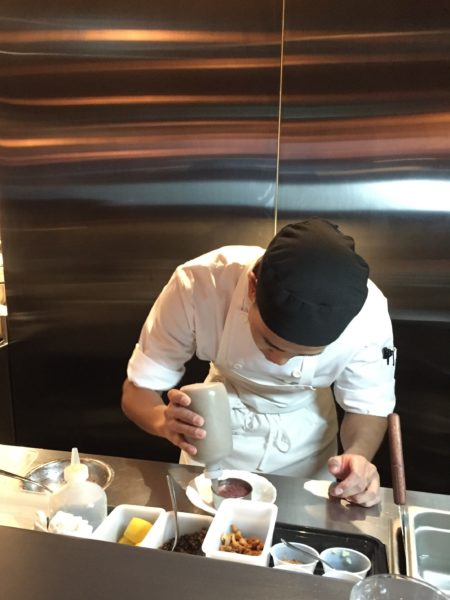
It was recently drawn to my attention that there is an Infographic on “The Elderly and The World Wide Web” which explains the U.S. seniors’ relationship with digital technology and how they increasingly rely on the internet to seek healthcare solutions. The infographic at https://medalerthelp.org/elderly-the-world-wide-web/ was developed by medalerthelp.org, a U.S. website that helps seniors differentiate and choose among the many medical alert systems that are available to them in the marketplace. The infographic is very creative in terms of colourful and user-friendly graphics illustrating evidence-based research and content.
Key findings, drawn from different reliable sources including the AARP, Pew Research, and other surveys, include the following:
- Studies show that educated seniors with higher incomes tend to use the internet at higher rates
- 82 percent of boomers/seniors use search engines to gather information on topics of interest
- Baby boomers spend about 27 hours per week online
- 70 percent of internet users aged 65+ use the internet on a typical day
- 66 percent of information accessed by the mature population online is access to news and weather; 57 percent of usage is related to shopping; 44 percent is accessing food information and 43 percent is to play games and related activities
- 71 percent of older internet users go online everyday or almost everyday
- 11 percent go online three to five times a week
- 25 percent of grandparents use email to communicate with their families; 75 percent of seniors use the internet to communicate with friends and family; and 55 percent of seniors follow a group or organization on social networks
- 40 percent of seniors are viewing online videos to stay up-to-date with the latest news
- 53 percent of seniors use the internet to learn about healthcare or medical issues
- 54 percent of seniors watch online video for entertainment
- 26 percent of the mature population say that mental sharpness is an extremely important reason for playing games and 50 percent say it is very important
The top three internet usage by category among American boomers and seniors are: getting health or medical information (66 percent); visit a local, state or federal website (58 percent) and doing banking or financial activities (55 percent).
Other interesting facts include 63 percent of 50 to 59-year-old Americans now access TV content via the internet and baby boomers are 19 percent more likely to share content on Facebook compared to any other generation.
In Canada, a recent study from Media Technology Monitor (MTM) also found that boomers and seniors are enthusiastically consuming content via digital media. Smartphones have found a comfortable home with the boomer demographic – 78 percent of younger boomers (aged 51 to 60) and 66 percent of older boomers (aged 61 to 71) report ownership. Younger boomers are more likely to own tablets and a healthy number of the younger demographic also have gaming consoles.
Canadian boomers’ desktop computer usage is similar to our American counterparts (56 percent vs 58 percent among American boomers). They also don’t appear as interested in wearable technology. The vast majority of older Canadian boomers still have a TV subscription (86 percent), compared to 91 percent of seniors over 72 years old and 65 percent of millennials. While 21 percent of millennials say they have no TV subscriptions but watch that content online, only five percent of young boomers say they have done so. Meanwhile, 21 percent of younger boomers are very or somewhat likely to cancel that subscription.
Around 55 percent of older boomers watch TV exclusively on a traditional TV set, and only one in 20 boomers reported watching TV exclusively online. Seniors over 72 years of age demonstrate the stronger affinity for traditional TV, radio and news platforms. More than nine out of 10 pay for conventional TV, nearly half have newspaper subscriptions and 83 percent report heavy viewing of news specialty channels.
Device use is also predictably lower among older Canadians – 18 percent say they access the internet via a TV set and 24 percent own a smart TV. Another 68 percent own a computer, with laptops surprisingly edging out desktops (47 percent vs 44 percent). Smartphone ownership tops out at 36 percent of seniors aged 72 and above, with tablets appearing in roughly as many senior households (33 percent). Another 25 percent of seniors report owning a “basic” or feature phone. Of the 91 percent of seniors who have a TV subscription, 11 percent were identified as being very or somewhat likely to cut the cord.
According to a TD Bank Group survey titled “Too Shy To DYI,” Canada’s baby boomers are comfortable with the Internet for most things, but a glaring exception is investing online through discount brokerages.
Almost four in five baby boomers (79 percent) use the Internet for banking, but only a meagre 16 percent are online do-it-yourself (DYI) investors, say the poll of 2,000 Canadian adults conducted in July 2017. TD Direct Investing said this behaviour can be attributed to the fact that many say they are unfamiliar or uncomfortable with online investing tools. The survey also found that boomers would invest online if they had a human being to hold their hands in the beginning and ask them investing questions.
According to a Financial Post article, the issue isn’t so much technological savvy as confidence and knowledge about investing. It’s obvious that baby boomers have already integrated technology into their lives in a variety of forms. They can set up a broker account or robo account and transfer money in and out. But many are confused, intimidated or fearful about making the right choices from the thousands of investments available to them.
TD found that 50 percent of boomers spend at least 15 hours a week on the internet, only a tad less than 58 percent for millennials. Ninety-four percent of Canadian boomers use the Web because it’s convenient and 84 percent find it easy. Seventy-seven percent use the Internet to read news online, 66 percent to shop via Amazon or its rivals, and 64 percent stay connected with friends and family through social media such as Facebook or Twitter.
The main reason for low boomer use of online investing is lack of investment knowledge. TD says 79 percent of those surveyed don’t manage their money online because they simply don’t know enough about investing, while 22 percent say they don’t have enough time to invest on their own.
Unfortunately, when compared to our American counterparts, Canadian boomers are less likely to adopt digital health technology, according to a 2017 study commissioned by Telus Health. According to the survey, Canadians in the boomer (aged 52+) and senior categories (aged 71+) reported that they are most likely to access a healthcare provider (78 percent). However, while 58 percent in this demographic agree that digital health tools would help them connect with their healthcare provider, this group ranks the lowest to use them (20 percent). Further, Canadians aged 52 years and over are 10 percent less likely than younger generations to agree that digital technology empowers them to take control of their health.
While these findings highlight the need to educate and engage all Canadians on the role of digital health technologies, a supplementary survey of Canadian healthcare providers uncovered tremendous support for the role that digital technology plays in staying connected with patients and other healthcare providers. Whether it’s to book appointments or send an alert when medications are low, three in four healthcare providers report using digital technologies to communicate with patients. Of those healthcare providers surveyed, 80 percent reported using digital technology to communicate with other healthcare professionals; and six in 10 believe that this integrated health team interaction improves patients’ overall wellness.
It looks like that although Canadian boomers and seniors are increasingly comfortable and versatile with technology, they might need more education on the important role digital solutions can play in their financial investments as well as their overall health and wellness.
]]>

The big hoopla about Canada’s legalization of cannabis has finally subsided a bit. I believe that very little will change in terms of behaviour. According to Statistics Canada, 4.9 million of Canadians already consumed $5.7-billion worth of cannabis in various forms, both medical and non-medical, last year. Boomers, in particular, are no strangers to cannabis. From their Woodstock days, boomers have smoked joints at concerts and college parties. Now that they are aging, baby boomers are seeking cannabis more as a pain relief rather than for recreational purposes.
Investor’s Business Daily cited a report from the marijuana delivery platform Eaze, which operated in California where recreational cannabis is also legal, which found that monthly marijuana spending last year among its thousands of users increased to US$179-$189 from US$125-$152 in 2016. An average-size pot dispensary draws more average yearly sales per square foot than a Whole Foods, and slightly less than a Costco, research from Cowen and Marijuana Business Daily has shown.
One reason why investors seem to have confidence in cannabis stocks is because a few alcohol companies, such as Molson and Constellation Brands, have taken on minority stakes in Canadian cannabis companies. Alcohol and tobacco companies are actually taking heed of the cannabis market because it directly affects their own businesses. As of 2016, the monthly rate of binge drinking was around 13 percent lower in the U.S. states that had fully legalized pot than in states where it was illegal, according to research from Cowen.
Tobacco companies may also look into having a share of the cannabis market. Vaping is one of the fastest-growing segments in both nicotine and cannabis. According to a Cowen analyst, upon federal legalization, big tobacco could leverage its expertise to explore the legal cannabis market through vapor. It was estimated that big tobacco companies could nearly double their underlying growth via the cannabis market and grab around a fifth of the overall share of the marijuana industry by 2030 in a fully-legal U.S. market. In the meantime, Canada presents a big opportunity for both the tobacco and alcohol industries.
Because the legalization of cannabis is so new in Canada, the marketing of pot has become a major challenge as well as a huge opportunity for marketing companies and law firms. Building brand recognition for cannabis brands is not easy. The Canadian government has rightly imposed hefty restrictions on cannabis companies’ ability to advertise. They cannot use endorsements from celebrities or other well-known individuals or offer up customer testimonials or product reviews. They also cannot advertise cannabis as part of an attractive lifestyle. Anything that could be appealing to young people or visible in media that could reach young people, is banned. That means no billboards and TV commercials.
Many marketers see the evolution of the cannabis industry as similar to the alcohol industry after Prohibition. But as the Federal Health Minister has pointed out, the Liberal government will measure the success of pot legalization in this country by looking at evidence that youth consumption via the black market is on a downward trend. Until the government sees that youth consumption is not rising as a result of legalization, that people are consuming responsibly and that the legal market is leading to a reduction in illicit sales, restrictions about the marketing of cannabis will continue to be very strict.
Cannabis can, of course, be harmful when used irresponsibly, but our nation has a much bigger health crisis in opioid overdoses than the potential harm of smoking weed. To boomers, cannabis therapy can relieve PTSDs and physical pain. We should be proud of our country who is moving forward when the whole world is going backward. After 96 years, marijuana prohibition has finally ended. As the second country, after Uruguay (where users must provide their fingerprints in order to buy pot), and the first major Western country to legalize cannabis and allow its undocumented use, Canada is showing the world how a mature country is handling this in a safe, disciplined and responsible way. The whole world is watching!
]]>
Photo Credit: CBC
Absence makes the heart grow fonder. Perhaps that’s why more and more North Americans are finding joy in “living apart together” (LAT) relationships. According to Statistics Canada, one in 13 Canadians are in this kind of relationship, and the lifestyle is catching on among older, divorced or widowed women looking for financial independence. Some 1.9 million unmarried adults were in an intimate relationship with someone living elsewhere, according to 2011 data. That’s in addition to 240,000 married people who live apart from their spouse in “commuter marriages.” These are often long-term committed couples who choose not to reside together. LAT partners can be married or unmarried, living apart because they want to or for practical reasons, such as work. Many speak of their residential separation as long-term, if not permanent.
A Globe and Mail article reported that today, sociologists say it is older, heterosexual, divorced or widowed women who are most enthusiastically adopting the trend. They are dating again monogamously but not interested in moving in with their new boyfriends. Financially independent and living in empty nests, these women are ready to focus on themselves. They want companionship but not the domestic drudgery of their previous unions: more dates, fewer dirty laundry to tackle.
What most LATers share in common is their drive for autonomy and self-fulfillment. That, and a deep urge to avoid the daily grind of traditional marriage that can kill all the romance, such as the fights over house chores and finances, and the ways familiarity can breed contempt when people live on top of each other for too long. Many traditional conservatives say that commitment means living in a shared nest and compromise for the relationship to be meaningful. Catholicism also frowns on the LAT relationships because living separately is not the same as the holy sacrament of matrimony. LATers, on the other hand, argue that they are quite deeply committed. With no practical ties that bind – no mortgage, joint finances or shared children – they are only in it because they choose to be. As Canada’s divorce rate hovers around 41 percent, LATers see living apart as a hopeful alternative to marriage under one roof.
LATers are dedicated but also respect each other’s independence and space. But because it’s unconventional, it’s also not for everyone. This is attractive to people who enjoy their own company and don’t need to be around people all the time. It will work less well for people who have attachment or trust issues, or who just don’t like being alone. The together-but-apart arrangement increasingly interests women in middle age and beyond, women who have suffered decades-long droughts of “me time,” according to sociologists. Two sociology professors who interviewed partners in heterosexual LAT relationships separately, said that men perceived the LAT as a stage. They talked about the eventuality of moving in together and didn’t see this as unlikely at all. Meanwhile, the women stressed they had no intention of living with these men. They said they were very tired of having to care for everyone. Wives who lived apart from their husbands because of work in “commuter marriage” discovered they had less housework to do and more leisure time at their disposal, a point not echoed by their husbands.
I remember fondly a former colleague of mine, a female VP working out of our London, U.K. office, who only met up with her Italian husband in Florence over weekends. Their LAT relationship is a “commuter marriage” which focuses on the individuals who both value their careers as much as they cherish their marriage. Now my godson and goddaughter-in-law are also experimenting with their “commuter marriage.” Both are young resident doctors getting their specialist degrees in internal medicine in two separate cities in California – one in Bakersfield and the other in Santa Barbara. With brutally long hours, sometimes working overnight shifts in their respective hospitals, this young doctor couple lives in separate residences and meets up only on their days off, sometimes not necessarily over weekends. There may not be time to raise a family yet, but the LAT marriage has been working fine.
What’s interesting is that LAT is a growing model among people aged 60 and over. In fact, over 80 percent of the young couples in LAT relationships planned on living together one day, while only 30 percent of those over 60 said the same. An Ipsos poll commissioned by Global News surveyed 1,501 Canadians and found that 40 percent believed that living apart makes their relationship stronger. This concept is especially appealing to people in their boomer and senior years today, particularly women, because after decades of caring for their husbands and children, these divorcees or widows are reluctant to take on the mantle of caregiving once again. Times have changed and women are no longer the ones who are always pushing for commitment in all its traditional trappings. In fact, it’s almost never the men who want to live apart from their partner, it’s always the women now who want more space and independence.
In the U.S., there is a similar demographic trend about these unconventional couplings. According to NBC News, at the annual meeting of the Population Association of America in Denver in April 2018, a graduate student in sociology at Bowling Green State University presented an analysis of nearly 7,700 Wisconsin adults aged 50 and older surveyed in 2011. Married couples accounted for 71.5 percent of that group, single people accounted for 20.5 percent, and people who were “partnered but unmarried” accounted for eight percent. Of the partnered group, 39 percent were in LAT relationships, compared with 31 percent who were dating and 30 percent who were cohabiting. Another 2016 qualitative study of 25 older adults (from 60 to 88-year-old) in LAT relationships found various motivations for these partnerships. Seniors wanted to have “intimate companionship” while maintaining their own home, social circles, customary activities and finance.
Very few studies have evaluated the quality of such unconventional relationships, which has implications for seniors’ well-being. One found that older adults in these relationships tend to be less happy and receive less support from partners than people who are married. Another, presented at last year’s Population Association of America meeting, found that the quality of LAT relationships isn’t as strong as it is for marriages.
Only time will tell whether this trend will continue to grow. What we’ve heard so far is that LATers really like their space, their time alone, and consider their emotional commitment to each other as very strong without needing to be together for 24 hours a day. Maybe absence does make a heart grow fonder.
]]>
I’ve been a fan of award-winning restaurant Alo since its opening about three years ago. With the opening of its latest offshoot – Alobar Yorkville located at 162 Cumberland Street in the heart of Toronto’s most upscale neighbourhood – the burgeoning Alo brand is surely expanding at a rapid rate.
By now, Alo Restaurant is at the apex of every single “best Toronto restaurants” and “best Canadian restaurants” list. It has also recently won the internationally-renowned Relais & Chateux designation and is the only Canadian restaurant ranked on the 2018 list of the World’s Best 50/100 Restaurants. Building on the flagship brand’s success and accolades, its “bistro/diner” sister establishment, Aloette, was opened last year followed by the newest family member, Alobar Yorkville, two weeks ago.
Alobar positions itself as “a cocktail bar as well as a full-fledged restaurant offering choice seafood with the finest accoutrements, fish and chops off of the charcoal grill, and world-class wines, all served with genuine hospitality” on its website. My first dining experience there was excellent as my friend and I were seated at the only two bar stools facing the open kitchen (the rest of the bar stools face the bar). I loved the hamachi, tuna tartare and foie gras appetizers, and my Pacific Cod as an entree was heavenly. Alobar is a classy and sophisticated combination of the food at the original bar of Alo Restaurant and the open kitchen “performance” at both Alo and Aloette. The banquette table arrangements at Alobar also reminded me of the seating at Alo. The room was decorated with an understated elegance and the vibe was lively, attracting primarily a boomer clientele.
I’ve also read from the website of Canada’s 100 Best Restaurants that Alobar features a Josper oven, a Spanish-made combination oven and grill powered exclusively by charcoal. Apparently, Jospers are de rigeur at the best tapas bars, grill rooms and grill-friendly fine-dining establishments across Europe and Asia. They are ultra expensive and there are only a few restaurants in Canada who have such an installation best used for grilling vegetables, fish or beef. Alobar has only 50 indoor seats and without any opening fanfare, the new restaurant is already sold out for at least a week in advance.
In terms of branding, I think Chef Owner Patrick Kriss is spot-on with his three restaurants. Alo is the flagship fine-dining brand – exclusive, sophisticated, world-class, and almost inaccessible with a two-month advance booking requirement and long wait lists. Right below Alo on the ground floor is Aloette, the sub-brand that is almost the opposite of Alo – accessible, very casual, and fun with no reservations required. Now comes Alobar Yorkville, the intermediate sub-brand – elegant, smart casual, intimate and vibrant – located in one of the most exclusive and chic neighbourhoods in Toronto. But all three brands share the same consistent qualities that have earned Kriss his accolades: attention to detail, excellent food and service, and beautiful ambiance.
I have shared with Chef Kriss in person what I think is his most distinct unique selling proposition that differentiates the Alo brand from the competition – the stellar quality of his people. Never have I seen elsewhere a team who absolutely shares Kriss’s vision and values for the Alo brand in everything they do. From the kitchen to the servers to the mixologists to the reception to the managers, everybody shares the same strong passion to deliver excellent service, genuine and warm hospitality, and an unforgettable experience for the customers in all three restaurants. In fact, the Alo group of restaurants are the only eateries in Toronto where I would not hesitate to leave a well-deserved 20 percent service gratuity when the bill comes.
Kudos to Kriss who not only has discerning eyes for recruiting the best people, but also has the foresight to help his team grow with him and his business. I’ve noticed him promoting high performers whenever possible from within the organization which is always the most effective way to retain talents. Customers frequent any of the three Alo restaurants not just because of the delicious food, but also the same consistent experience that they deliver during each visit. It remains to be seen whether Chef Kriss’s ambition and vision would take him beyond Toronto and even around the world similar to what Daniel Boulud, David Chang, Jean-Georges Vongerichten and Joel Robuchon have accomplished. But Chef Kriss is still young and, for now, his star is very bright in the culinary and hospitality firmament!
]]>

Photo Credit: Linkmedia 360
I see an emerging Canadian real estate trend mirroring that of the U.S. – millennials and seniors, the most unlikely roommates, are now increasingly sharing a home together. The Globe and Mail recently reported that with the rise of Canada’s rents while the vacancy rate shrinks, a growing number of seniors are living in homes too big, while young Canadians squeeze into apartments too expensive. The concept of home sharing – where the homeowner, usually a senior, offers reduced rent for a room in their home in exchange for small chores and companionship – is getting attention in small towns and cities across the country, including a new pilot project in Toronto this summer.
The publication reported that this month, Boston expanded the use of a new housing app called Nesterly – co-developed by a MIT-grad and billed as a socially-conscious solution to both loneliness and soaring housing costs – which creates home-sharing matches between seniors and cash-strapped university students. Sometimes, it’s not only students who are in a financial bind. In January this year, The New York Times reported that many older Americans, who discovered that their savings had dwindled, were looking for millennials to share their homes and split the utilities and the rent equally. For many baby boomers entering retirement, financial security is also increasingly hard to come by. Many North Americans have not saved enough to maintain their pre-retirement living standards. Increased life expectancy and lower interest rates only exacerbate the situation.
In addition to apps like Nesterly, non-profit organizations, such as the New York Foundation for Senior Citizens, have been operating a home-sharing service since 1981, matching people who have space in their homes with those in need of affordable housing. It is one of a number of similar programs that have emerged across the country as the population of older Americans grows, as a way to help people stay in their homes.
Similarly, across Canada, affordable-housing advocates have proposed home sharing as a creative option for communities trying to balance a rapidly aging population and a shortage of affordable, long-term rental properties. The most successful home-sharing programs involve a step-by-step process that carefully matches homeowners and tenants, requiring funding for trained facilitators. Whether we like it or not, many Canadian trends follow those of our southern neighbours. A lot of these new projects are modelling themselves after a non-profit organization in Vermont, now more than 30 years old, where matched candidates meet, have trial stays and, if both agree, sign a clear contract that outlines expectations and rules while they live together.
Nesterly, which started as a pilot with the city of Boston last year, focused on university students and expanded in July to include the entire city population, works like a dating app, allowing potential tenants to post confidential profiles that can be matched to homeowners. The team at the Boston app also conducts criminal-record checks and follows up on references, then allows homeowners to choose from a number of matches. In its pilot year, the program made 10 matches – there are now another 50 active “hosts” on the platforms with thousands of home seekers to choose from.
Nesterly staff also help facilitate interviews and finalize detailed home-sharing contracts and even collect the rent on behalf of the homeowner, while taking a small percentage, and a fee for offering continuing support. Millennials chosen by seniors homeowners often help with snow shovelling, walking the dog, gardening, the occasional shelf-hanging, or chatting to the seniors about any topics of shared interest.
For the older homeowners, having younger company is also potentially a lifesaver. Seniors have a tendency to fall at home and could be assisted by their younger roommates or tenants when such accidents occur. In return for the physical labour provided by the millennials, some older homeowners leave homemade meals for them on the table by the front door.
According to a 2017 study by the Canadian Centre for Economic Analysis, Ontario alone has five million spare bedrooms and three-quarters of the province’s seniors live in houses too large for their needs. Home sharing may not solve Canada’s housing woes, but advocates say it’s an example of how more solutions should go beyond windows and walls.
I’m also glad to see that a provincially-funded pilot project for Toronto will begin this summer – an initiative undertaken by the National Initiative for the Care of the Elderly at the University of Toronto. Tonya Salomans, a social worker who is coordinating this project, sees home sharing as an option for generations to mingle and learn from one another, to improve the health of isolated seniors, while helping young people cover rent. The goal is to match 20 seniors with university students and then follow how well the living arrangements work.
Outside Ontario, this fall, a group of housing advocates in Nova Scotia plan to tour communities promoting options such as home sharing. The Globe also reported that a Burlington entrepreneur has started the Homeshare Alliance, a business that matches people and guides them through the contract stage for a fee.
Of course, home sharing is not for everyone. Seniors have to be flexible (a rare quality to have when you’re aging), enjoy people and set clear rules from the beginning. For those who are willing to give this creative solution a try, home sharing may be the best way to integrate the young and old in society.
]]>